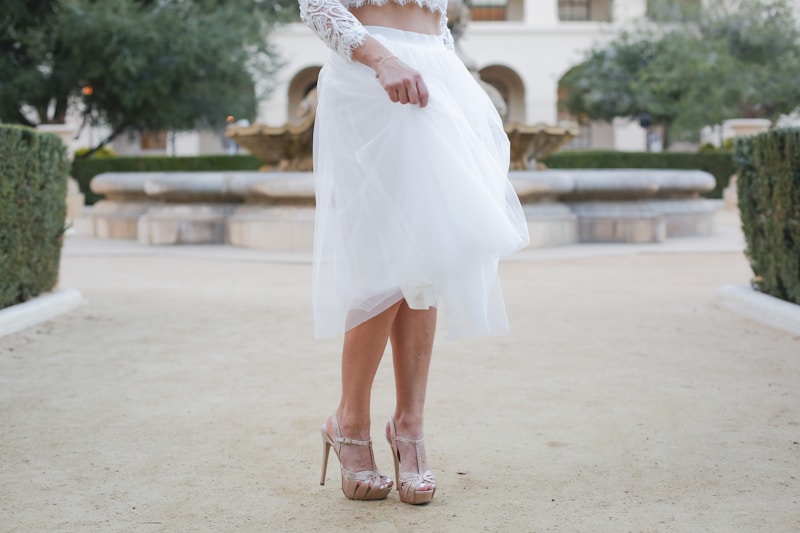Understanding Fabric Choices for Wedding Dresses: A Comprehensive Guide
Understanding Fabric Choices for Wedding Dresses: A Comprehensive Guide
Choosing the right fabric for your wedding dress is a pivotal part of your wedding planning journey. With a myriad of options available, it can be overwhelming to decide which material best complements your body shape, the season, and the overall theme of your wedding. This article delves into the various fabric choices for wedding dresses, their characteristics, and how they can impact the overall look and feel of your gown.
Types of Fabrics for Wedding Dresses
Understanding the different types of fabrics available is crucial. Each fabric has its unique properties, which can dramatically alter the dress's design, feel, and silhouette. Below, we explore some of the most popular fabric choices:
| Fabric Type | Characteristics | Best For |
| Satin | Luxurious, smooth, and has a slight sheen | Formal weddings and evening ceremonies |
| Tulle | Lightweight, sheer, and often used in layering | Romantic and whimsical bridal gowns |
| Lace | Delicate, intricate patterns; often used for overlays | Vintage, bohemian, or classic wedding styles |
| Chiffon | Soft, flowy, and lightweight, creating a dreamy effect | Summer weddings or destination ceremonies |
| Organza | Stiff, thin, and often adds volume to designs | Structured dresses with a modern flair |
| Silk | Soft, natural sheen; drapes beautifully | Luxury weddings and elegant bridal styles |
Satin: The Classic Choice
Satin is often considered the gold standard for wedding dress fabrics. Its smooth texture and slight sheen give gowns an elegant and timeless appeal. Satin holds structure well, making it perfect for ballgowns and designs that require a dramatic silhouette.
Tulle: For the Whimsical Bride
Tulle is a popular fabric for brides looking for a fairy-tale look. Its lightness and volume make it ideal for creating layered skirts and veils. Tulle can be used in various styles, from traditional ballgowns to more modern interpretations.

Lace: A Touch of Romance
Lace dresses exude romance and charm, making them a favorite among brides. The delicate patterns and textures add depth and character, making lace a versatile choice for various wedding styles, from vintage to bohemian. Lace can be used as an overlay, combined with other fabrics for a stunning effect.
Chiffon: Perfect for Summer Weddings
Chiffon is another lightweight option that is ideal for warm-weather weddings. Its sheer quality allows for delicate layers and flowing designs. Chiffon dresses often feature beautiful draping, making them a perfect choice for outdoor and destination weddings.
Organza: Structured Elegance
Organza is a crisp, lightweight fabric often used for structured dresses. It has a slight sheen and holds its shape, making it an excellent option for modern brides seeking a clean and sophisticated look. Organza can be layered for added volume or used on its own for a sleek appearance.
Silk: The Luxurious Option
Silk is the epitome of luxury for wedding dresses. Its natural sheen and soft drape create an elegant silhouette that is both comfortable and stunning. Silk dresses often feature intricate detailing and can be made in various styles, from classic A-line to sleek mermaid cuts.
Seasonal Considerations for Fabric Choices
Your wedding's season should greatly influence your fabric choice. Each fabric has strengths that suit various weather conditions. For example, lighter fabrics like chiffon and tulle are ideal for summer ceremonies, whereas heavier materials like satin and silk may be better suited for fall and winter weddings. Here’s a breakdown of fabric recommendations based on the season:
| Season | Recommended Fabrics | Considerations |
| Spring | Chiffon, Lace, Tulle | Soft and romantic with floral elements |
| Summer | Tulle, Chiffon, Organza | Lightweight and breathable for hot weather |
| Fall | Satin, Silk, Lace | Rich colors; heavier fabrics work well |
| Winter | Satin, Silk, Brocade | Warm fabrics; consider layering with shawls |
Choosing the Right Fabric for Your Body Type
Aside from seasonality, understanding your body type is essential in selecting the fabric that will complement your figure. Different fabrics drape differently and can enhance or conceal certain aspects of your silhouette. Here are some tips for choosing the right fabric based on your body type:
- A-Line Body Type: Most fabrics work well. However, avoid overly stiff materials that may add bulk.
- Hourglass Body Type: Fabrics like satin and silk enhance curves. Consider fitted styles for a flattering look.
- Apple Shape: Go for flowy fabrics like chiffon that do not cling too closely to the body.
- Pear Shape: Opt for fabrics that structure the top and flow out at the bottom, like A-line tulle dresses.
Maintenance and Care of Wedding Dress Fabrics
After choosing the perfect fabric for your wedding dress, it’s crucial to consider maintenance. Different fabrics require various care methods:
- Silk: Dry clean only; avoid exposure to sunlight to prevent fading.
- Lace: Delicate spot cleaning; follow care instructions carefully to maintain integrity.
- Satin: Typically dry clean; steam gently to remove creases.
- Tulle and Chiffon: Gentle hand wash and air dry; avoid twisting when wet.
Final Thoughts
Choosing the right fabric for your wedding dress is more than just a personal preference; it significantly impacts your comfort, silhouette, and overall wedding aesthetics. Remember to consider the season, your body type, and the care required for maintaining the fabric. We recommend scheduling a fitting to see how each fabric feels and looks on you before making a final decision.
As you navigate through the overwhelming choices, remember that the perfect dress will make you feel as beautiful as you envision yourself on your special day. Best of luck with your wedding planning journey!
